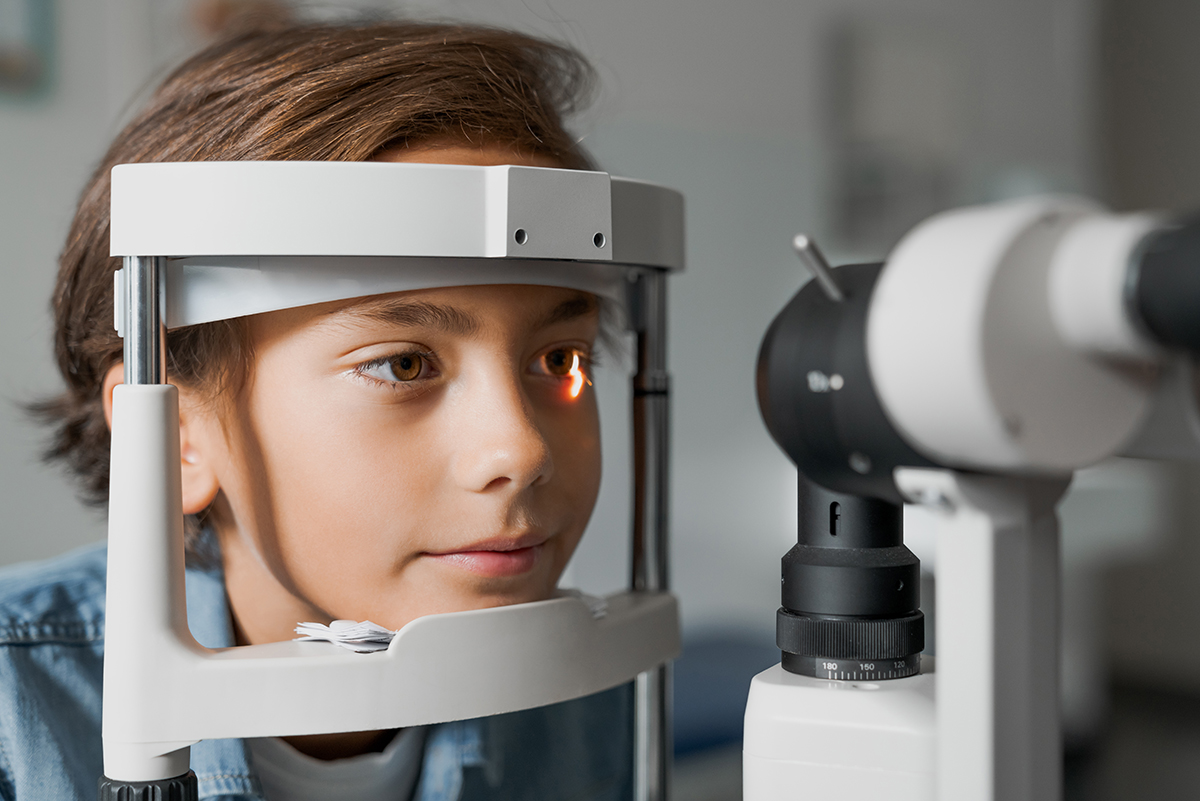
Many people find that they need reading glasses starting around age 40. Our eye doctors in Kansas City, Missouri, offer treatments for presbyopia so you can enjoy good vision without the burden of readers or special contact lenses.
What is Presbyopia?
Good vision relies on many parts of the eye but starts with the cornea and lens. Together, these components refract light onto the retina at the back of the eye, which relays the message to the brain through the optic nerve. The dome-shaped, transparent cornea allows light to enter the eye, and the lens sits behind the pigmented iris and adjusts with the incoming light. The lens is why your pupils are large in dim environments and small on bright sunny days.
The natural eye lens is soft and flexible, allowing it to quickly change shape to view objects far away or close up, such as a menu or text message. As you get older, the lens gradually loses the ability to accommodate for nearby objects and hardens. The loss of crisp near vision that results is called presbyopia and is a natural part of aging. There’s no way to stop or reverse presbyopia, but contact lenses, eyeglasses and eye surgery can correct your near vision and stop related eye strain and headaches.
Treatments for Presbyopia
Our board-certified eye doctors offer many solutions for presbyopia, including refractive lens exchange, corneal inlays and reading glasses or contact lenses. If you only have presbyopia, readers (reading glasses) may work well for you, but people with nearsightedness, farsightedness or astigmatism may wish to eliminate the need for corrective eyewear.
Refractive Lens Exchange
Refractive lens exchange is performed the same as cataract surgery; the only difference is that the removed eye lens is clear and not cloudy from a cataract. Our skilled eye doctors remove the aging, rigid lens and replace it with an intraocular lens (IOL) implant that corrects for near, intermediate and distance vision. Wiles Eye Center offers Crystalens HD, Tecnis Multifocal and ReSTOR Multifocal IOLs for presbyopia correction and other refractive errors. We will recommend the IOL that’s most suitable for your needs because each IOL has unique features.
Corneal Inlays
Corneal inlays can allow you to rid yourself of contact lenses and glasses for presbyopia and are removable if you’re unhappy with the results. Tiny plastic rings are placed in the cornea of one eye. The inlays have small central openings like a pinhole camera to focus light entering the eye for better vision.
If you struggle with presbyopia, schedule an eye exam at Wiles Eye Center to see if one of these treatments is right for you. Contact our Kansas City, Missouri office at (816) 455-2020 or our St. Joseph, Missouri office at (816) 279-7015.
The post How Presbyopia Causes Near Vision Loss and What You Can Do About It appeared first on .
from https://perfect2020.com/how-presbyopia-causes-near-vision-loss-and-what-you-can-do-about-it/
via https://perfect2020.com
